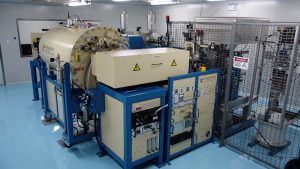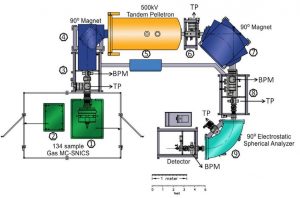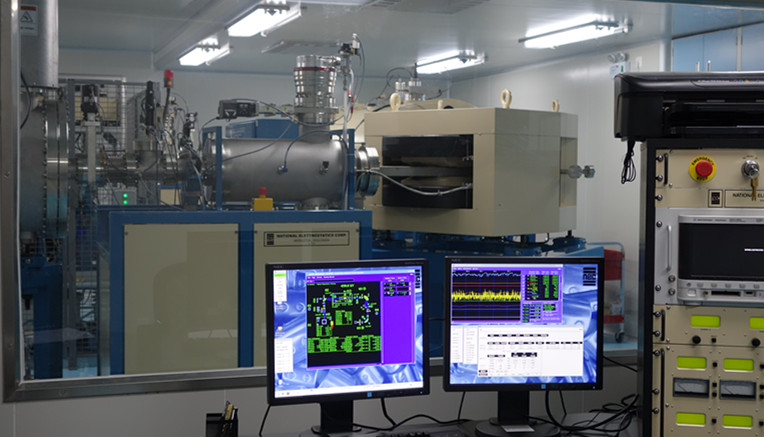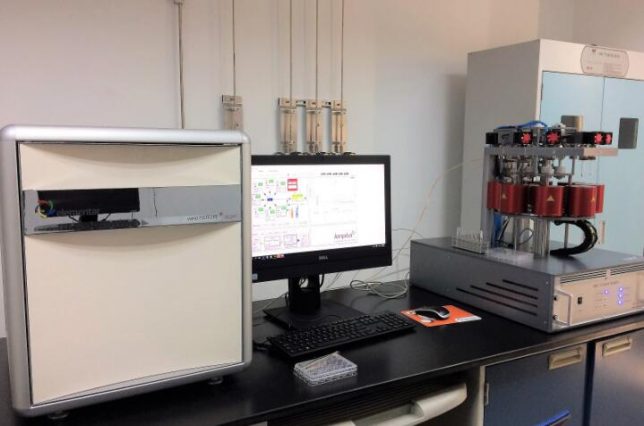Click to visit our dedicated GIG Environ. Radiocarbon website.
NEC 0.5 MV 14C acclerator mass spectrometer in SKLOG
[Intrudoctory text: Zhu Sanyuan(朱三元)] To meet the increasing demand for 14C sample analyses from south China, a compact 14C AMS system manufactured by National Electrostatics Corporation was installed at Guangzhou Institute of GIGCAS in April of 2014. This machine is the fourth-generation commercially delivered compact AMS system from NEC.The machine arrived at Guangzhou on February 24, 2014. The installation started on March 3 and finished on April 10.
The system is equipped by a NEC 134-sample Multiple-Cathode SNICS ion source and a CO2 gas handling system that has a 10-sample array with a pneumatic control and computer interface. The ion source housing is designed to measure both graphite and CO2 gas samples. The fast switching injection system injects the carbon ions 12C, 13C and 14C for every 0.3, 1 and 100 ms respectively, and sequentially with a cycle repeat rate of 10 Hz. A Model 1.5SDH-1 Pelletron accelerator is used in the system with the maximum terminal voltage of 0.6 MV. The terminal voltage is set to 0.46 MV for daily measurement currently. Argon gas is supplied to the center of stripper canal and re-circulated by two turbo-molecular vacuum pumps. The high energy analyzing system includes a 90 magnet (ME/Z2 = 18) and a 90 electrostatic spherical analyzer (ESA, radius = 0.75 m). The final detector is a silicon barrier detector to identify 14C ions. Eight turbo pumps are installed in the system to obtain good vacuum condition. Four are Varian V301, located at ion source (one for gas sample measurement) and accelerator (three) respectively; four are Pfeiffer Hipace700, utilized along the beamline of Low Energy (LE) beamline, post-accelerator, high energy (HE) beamline and ESA. Three Beam Profile Monitors, located at LE beamline, HE beamline and post-ESA, are used to monitor the position of beam.
Although there were many problems, our overall impression is that the machine is reliable in general. During these months most of the hardware components were in good condition. Data quality was not great yet mainly because we were lack of experience on machine operation and maintenance. On a more positive note, we learned a lot from the machine operation in these months, including the problems we ran into. We are confident that the AMS will perform normally in the near future although there are still many aspects to be improved, including alignment, ripple problem and the stability of cooling water temperature.
For more ino about the AMS, please refer to our publication: Zhu S Y et al., NIMB, 2015,361, 72-75.
An overview of the AMS facility. (Photograph by: Gao Wei, 高伟.)
Schematic chart of the AMS structure and settlement in the lab venue. (Technical design and image by NEC Co.)
The 90 degree magnet. (Photograph by: Gao Wei.)
Control and data log terminal. (Photograph by: Gao Wei.)
Fully automatic AGE 3 system for graphite target preparation, suitable for 0.15-1mg C, with a daily throughput up to 28 samples.
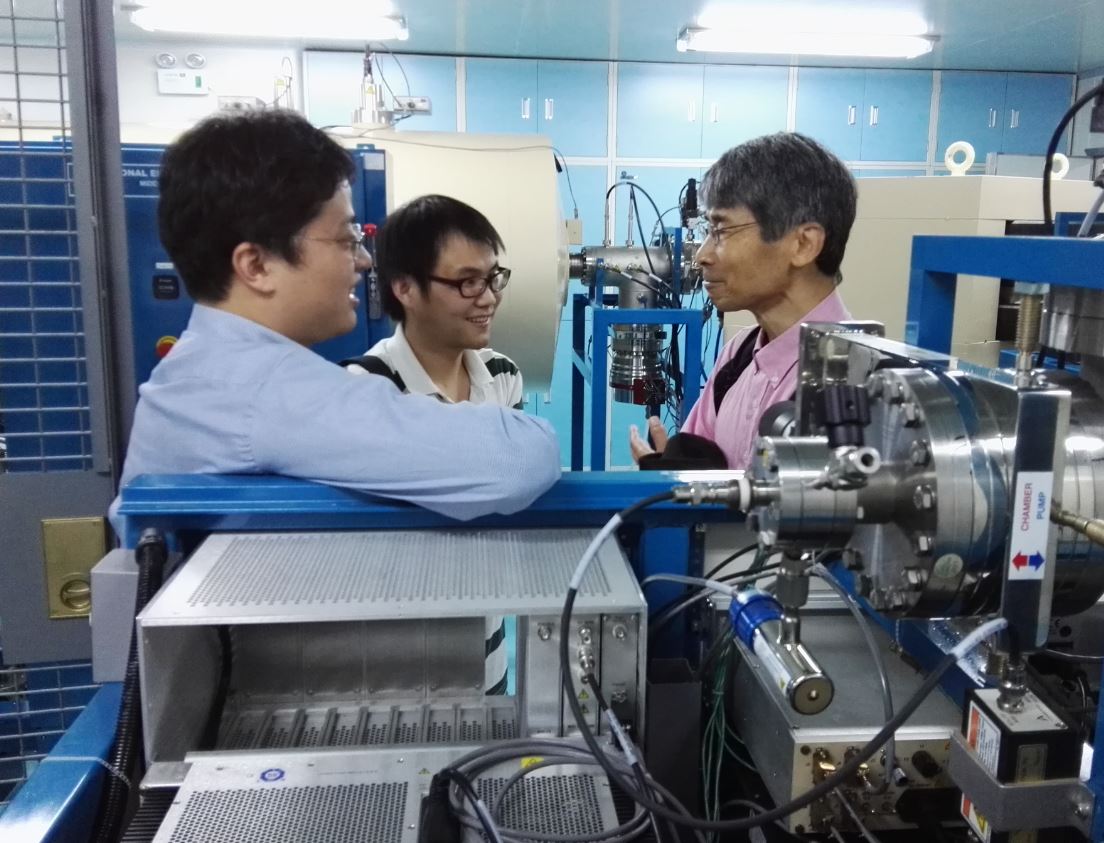 Professor Kimitaka Kawamura (河村公隆, right 1)of Hokkaido University of Japan visiting the AMS facility, accopanied by Professor Zhang Yanlin (章炎麟, left 1)of Nanjing University of Information Engineering (南京信息工程大学)who was one of our group members (PhD student), on November 7 2015. (Photograph by: Zhang Gan.)
Professor Kimitaka Kawamura (河村公隆, right 1)of Hokkaido University of Japan visiting the AMS facility, accopanied by Professor Zhang Yanlin (章炎麟, left 1)of Nanjing University of Information Engineering (南京信息工程大学)who was one of our group members (PhD student), on November 7 2015. (Photograph by: Zhang Gan.)

